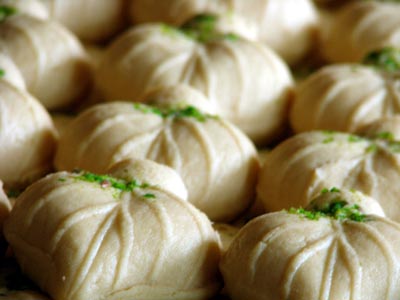Facts About Sandesh
Sandesh is a delightful dessert originating from the Bengal region in eastern India, made primarily from milk and sugar. Some variations substitute milk with chhena or paneer, offering a unique twist. In Dhaka, a softer variation known as pranahara is made using mawa and curd essence.
The origins of Sandesh can be traced back to medieval Bengali literature, with references in texts such as Krittibas' Ramayana and the lyrics of Chaitanya. Although the exact ingredients of the early versions of Sandesh are unknown, it was likely different from today's chhena-based variant and may have been made from thickened milk, or kheer. By the late 19th century, the chhena-based Sandesh became more prevalent, possibly influenced by the Portuguese, who introduced cheese (chhena) to the region in the 16th century.
Making Sandesh involves using chhena or cottage cheese. The simplest type, known as makha sandesh, is made by lightly tossing chhena with sugar over low heat. When shaped into balls, it's referred to as Kanchagolla. More elaborate versions require drying and pressing the chhena, adding fruit essences, colors, and cooking it to achieve different textures. One popular variant is nolen gurer sandesh, made with jaggery, giving it a distinct brown color. Sandesh can also be filled with syrup, mixed with coconut or kheer, and shaped into imaginative forms like conch shells, elephants, and fish.

 India
India